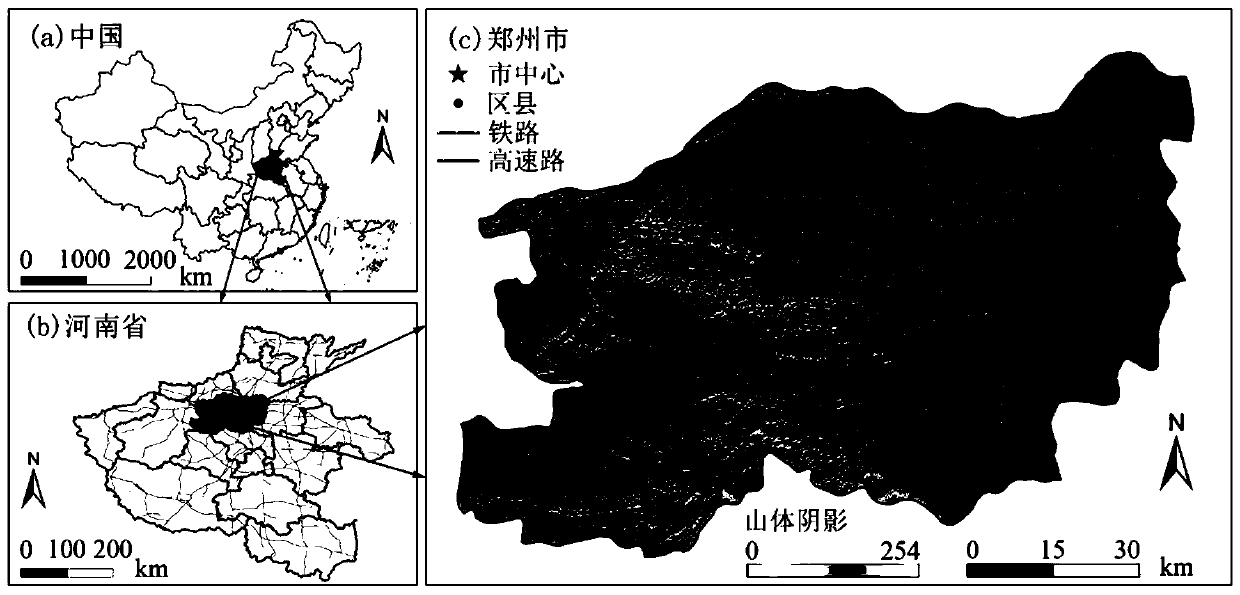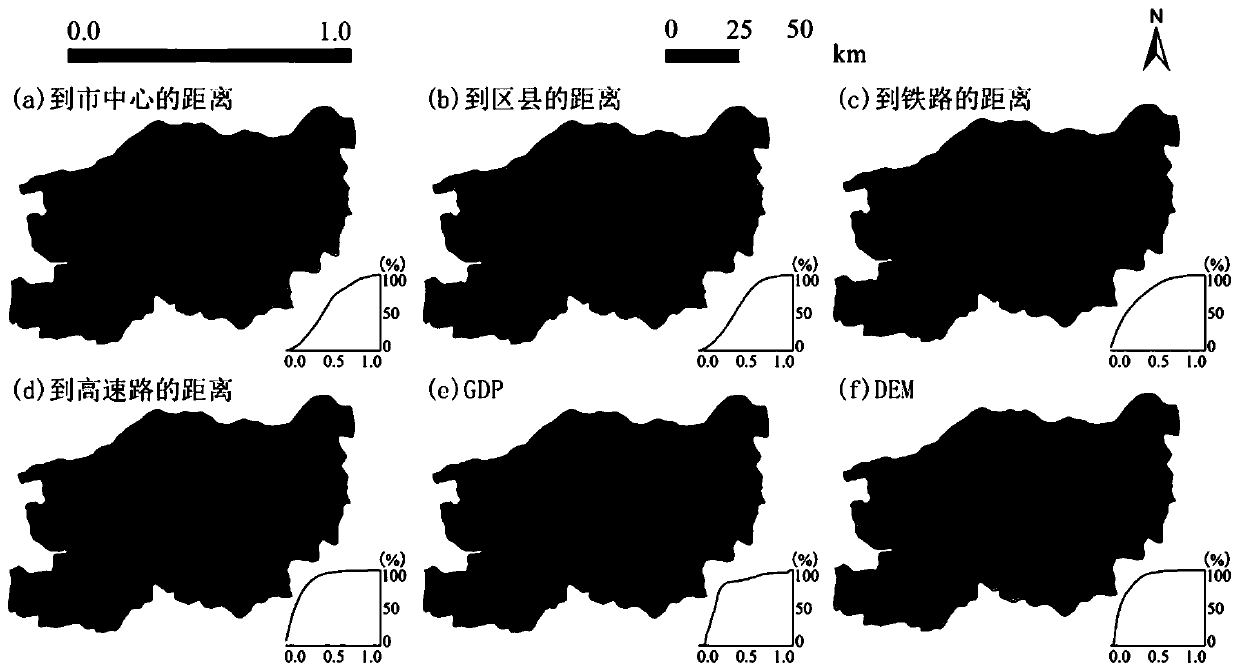Urban land utilization simulation cellular automaton method based on space errors
A cellular automaton and spatial error technology, applied in data processing applications, computer components, character and pattern recognition, etc., can solve the problem of inability to explain multicollinearity, autocorrelation effects, spatial heterogeneity, and increased computing costs problems, to achieve the effect of accurate conversion rules and high precision of simulation results
- Summary
- Abstract
- Description
- Claims
- Application Information
AI Technical Summary
Problems solved by technology
Method used
Image
Examples
specific Embodiment
[0104] The actual concrete embodiment of the present invention is as follows:
[0105] 1) The location of this case is as follows figure 2 shown. The land use data of Zhengzhou in 2000 and 2010 were extracted by GlobeLand30, and the urban land use pattern of Zhengzhou in 2000 and 2010 was obtained by reclassification. The support vector machine method interpreted the remote sensing image of Zhengzhou City acquired by Landsat8 / OLI on December 24, 2017, and obtained the urban land use pattern in 2017;
[0106] 3) Obtain the city location and traffic road network data, and get the distance to the city center, to the district and county center, to the railway, and to the expressway based on the Euclidean distance. After these distances are normalized, they are used as urban land use changes influencing factors. Obtain digital elevation model (DEM) and economic (GDP) data as topographic and socioeconomic influencers of land use change such as image 3 shown;
[0107] 4) Carry o...
PUM
 Login to View More
Login to View More Abstract
Description
Claims
Application Information
 Login to View More
Login to View More - R&D
- Intellectual Property
- Life Sciences
- Materials
- Tech Scout
- Unparalleled Data Quality
- Higher Quality Content
- 60% Fewer Hallucinations
Browse by: Latest US Patents, China's latest patents, Technical Efficacy Thesaurus, Application Domain, Technology Topic, Popular Technical Reports.
© 2025 PatSnap. All rights reserved.Legal|Privacy policy|Modern Slavery Act Transparency Statement|Sitemap|About US| Contact US: help@patsnap.com



